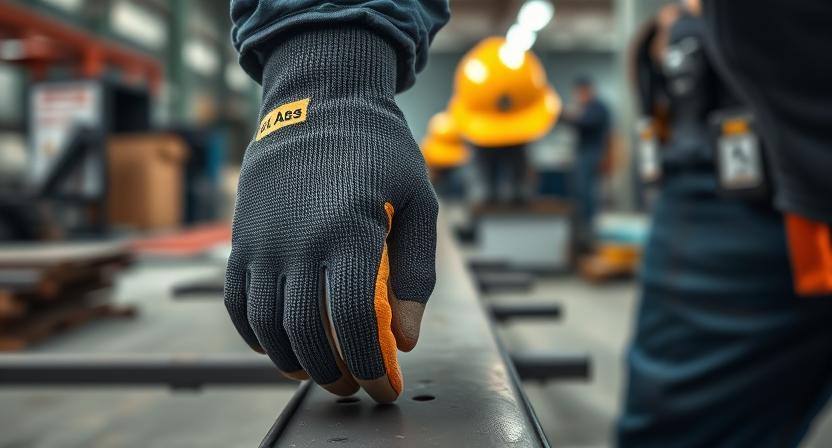How Often Should You Replace Cut-Resistant Gloves?

Introduction
Cut-resistant gloves are essential for protecting workers in manufacturing, construction, and other high-risk industries. However, even the best gloves degrade over time, losing their protective qualities. Replacing them at the right time is crucial to maintaining workplace safety and compliance.
In this guide, we’ll cover:
Key factors affecting glove lifespan
Signs it’s time to replace your gloves
Industry standards for glove replacement
Best practices to extend glove durability
Factors Affecting the Lifespan of Cut-Resistant Gloves
1. Material and Construction
Cut-resistant gloves are made from materials like:
High-performance polyethylene (HPPE)
Kevlar®
Stainless steel mesh
Nitrile or latex coatings
Durability varies—steel mesh lasts longer than lightweight HPPE, but comfort and dexterity may differ.
2. Frequency of Use
Daily use in harsh environments (e.g., metal fabrication) wears gloves faster.
Occasional use (e.g., packaging) may extend lifespan.
3. Work Environment
Exposure to:
Chemicals (degrades fibers)
Extreme temperatures (weakens materials)
Abrasive surfaces (causes fraying)
4. Care and Maintenance
Proper cleaning (follow manufacturer guidelines)
Storage (keep away from direct sunlight/moisture)
Signs Your Cut-Resistant Gloves Need Replacement
1. Visible Damage
Cuts, holes, or frayed edges compromise protection.
Loose fibers indicate weakening material.
2. Reduced Grip
Worn-out coatings (e.g., nitrile) reduce slip resistance.
3. Loss of Comfort & Fit
Stretched-out gloves won’t provide a secure fit.
4. Failed Cut-Resistance Tests
If gloves no longer meet ANSI/ISEA 105 or EN 388 standards, replace them immediately.
Industry Standards for Glove Replacement
ANSI/ISEA 105 Ratings
Gloves are rated from A1 (lowest) to A9 (highest) cut resistance.
A1-A2: Replace every 1-3 months with frequent use.
A3-A5: Last 3-6 months in moderate conditions.
A6-A9: Can last 6-12 months in heavy-duty applications.
EN 388 (European Standard)
Uses a 1-5 scale for cut resistance. Higher-rated gloves typically last longer.
Best Practices to Extend Glove Lifespan
Do’s
✔ Inspect gloves daily before use.
✔ Rotate multiple pairs to reduce wear.
✔ Follow cleaning instructions (hand wash vs. machine wash).
Don’ts
✖ Use damaged gloves—replace immediately.
✖ Expose to harsh chemicals unless rated for it.
Final Thoughts
Cut-resistant gloves are a critical investment in workplace safety. Regular inspections, proper care, and timely replacement ensure maximum protection.
Need high-quality cut-resistant gloves? Browse our certified collection or contact our safety experts for personalized recommendations.
🔹 Pro Tip: Keep a glove replacement log to track usage and schedule replacements efficiently.
By following these guidelines, you’ll reduce injury risks, improve compliance, and save costs in the long run. Stay safe!
FAQs: People Also Ask
Can cut-resistant gloves be repaired?
No—once damaged, they lose protective integrity and should be replaced.
How do I test if my gloves are still effective?
Conduct a visual inspection and check for flexibility. For compliance, refer to ANSI/ISEA 105 testing standards.
Are expensive gloves more durable?
Not always—choose based on your specific work hazards rather than price alone.
How should I store cut-resistant gloves?
Keep them in a cool, dry place, away from UV exposure.
